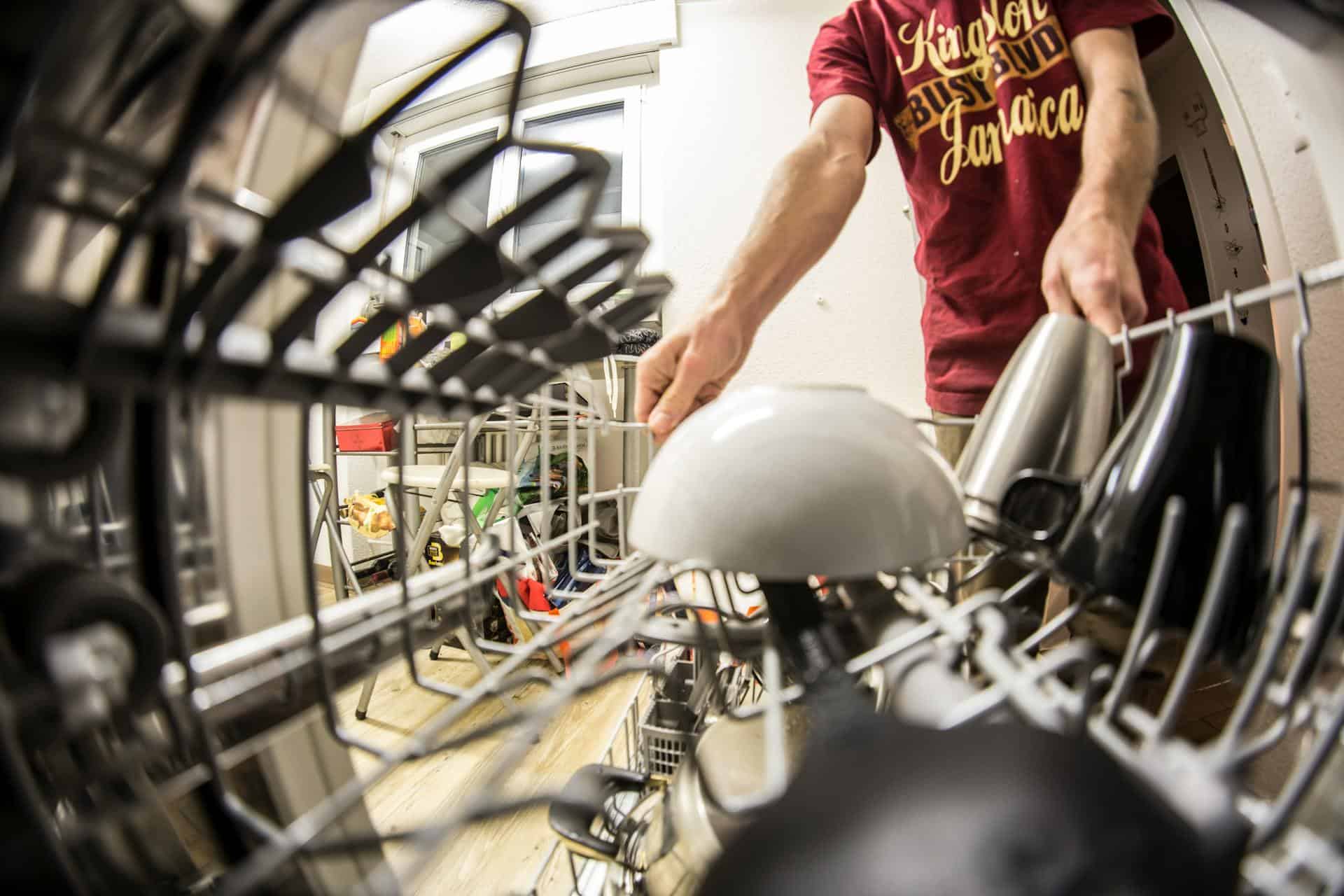
Question: What Happens If You Put Too Much Rinse Aid in the Dishwasher?
Answer: If you put too much rinse aid in the dishwasher then excess suds can overflow, leaving a soapy residue on dishes and inside the machine. Your dishes may also appear streaky or spotty.
Too Much Rinse Aid: Dishwasher Dilemmas
Dishwashers simplify our lives. They clean our dishes efficiently, leaving them sparkling and ready for use. A key component of this cleaning process is rinse aid. Rinse aid prevents water spots and helps dishes dry faster. But what happens when you accidentally pour too much rinse aid into the dispenser? This article explores the potential consequences of overusing rinse aid and offers solutions to rectify the situation. We’ll cover everything from understanding the role of rinse aid to troubleshooting excess rinse aid problems. We’ll examine the potential effects on your dishes, your dishwasher, and even the environment.
We will discuss how too much rinse aid affects your dishes and your dishwasher’s performance. You’ll learn how to identify the signs of rinse aid overuse and effective methods to resolve the issue. We’ll also cover preventative measures to ensure this doesn’t become a recurring problem.
The Role of Rinse Aid
Rinse aid plays an important role in the dishwashing process. It reduces surface tension of the water, preventing it from clinging to dishes. This action minimizes water spots and streaks, promoting faster drying. Rinse aid contains surfactants that help water sheet off dishes quickly. This sheeting action leaves dishes drier and more spotless than without rinse aid.
The correct amount of rinse aid enhances the overall cleaning performance of your dishwasher. It complements the detergent by ensuring dishes come out clean and sparkling. The appropriate amount depends on your water hardness and the specific dishwasher model.
Using the right quantity of rinse aid is essential for optimal dishwashing results. Too little can leave dishes spotted, while too much can cause a range of problems, impacting both your dishes and dishwasher performance.
Click the link for more information about Blue Kitchen Refacing
Related Article: Do I Need Rinse Aid in My Dishwasher If I Use Tablets?
Related Article: Can I Use Vinegar in My Dishwasher Instead of Rinse Aid?
Effects of Excess Rinse Aid on Dishes
Overusing rinse aid can negatively impact your dishes. The excess can leave a residue, making dishes appear cloudy or streaky. Glassware, especially, suffers, developing a bluish film that dulls its shine.
Residue from too much rinse aid can also affect the taste of food and drinks. A slight soapy taste or smell may cling to dishes, even after rinsing. This affects the sensory experience of dining.
Over time, excessive rinse aid might etch or damage delicate glassware. The prolonged exposure to the harsh chemicals in rinse aid can weaken the glass, leading to premature wear and tear.
Impact on Dishwasher Performance
Too much rinse aid can also affect your dishwasher’s performance. Excessive suds can interfere with the wash cycle, hindering proper cleaning. The overflow of suds can also trigger leaks, damaging the appliance and surrounding cabinetry.
Excess rinse aid can clog the dishwasher’s drainage system, leading to standing water and unpleasant odours. This buildup of rinse aid affects the appliance’s efficiency and can result in costly repairs.
The overuse of rinse aid puts extra strain on the dishwasher’s pump. The pump must work harder to remove the excess suds, potentially shortening its lifespan. This added workload can lead to premature failure of the pump motor.
Addressing the Rinse Aid Overdose
If you notice signs of excess rinse aid, you can take several steps to remedy the situation. First, run an empty dishwasher cycle with hot water. This helps flush out the excess rinse aid from the system. Adding a cup of white vinegar to the empty dishwasher can also help neutralize the rinse aid.
If the problem persists, manually wipe down the inside of the dishwasher with a damp cloth. This removes any lingering residue. You can also adjust the rinse aid dispenser setting to a lower level for future washes. This prevents the issue from reoccurring.
For severe cases, you may need to contact a qualified appliance repair technician. The technician can diagnose any underlying problems caused by the rinse aid overdose and recommend appropriate repairs. Prompt action minimizes potential long-term damage.
Preventing Future Issues
Preventing overuse is simpler than fixing the consequences. Consult your dishwasher’s manual. The manual provides specific instructions on the correct amount of rinse aid to use for your particular model. Pay attention to the fill line on the rinse aid dispenser.
Start with a low setting on the rinse aid dispenser. You can gradually increase the setting until you achieve the desired results. Observe your dishes after each wash cycle to determine the optimal setting. Regularly clean the rinse aid dispenser to prevent buildup.
Consider using rinse aid alternatives like white vinegar or citric acid. These natural solutions offer similar benefits without the risk of chemical residue. Experimenting with different options helps find the best solution for your needs and preferences.
Conclusion
Using the right amount of rinse aid enhances dishwashing. However, adding too much can cause problems for your dishes and dishwasher. Understanding the role of rinse aid and recognizing the signs of overuse helps you prevent these issues. By following the preventative measures discussed in this article, you can ensure optimal dishwasher performance and keep your dishes sparkling clean. Regular maintenance and proper usage of rinse aid lead to better results and prolong the lifespan of your dishwasher.
Remember, balance is key. Too little rinse aid leaves dishes spotted and slow to dry. Too much rinse aid causes streaking, film, and potential damage to the dishwasher. Finding the sweet spot ensures clean, sparkling dishes and a smoothly operating appliance. Careful rinse aid management contributes to a more efficient and pleasant dishwashing experience.

Blue Malue Get in touch with Blue here.
